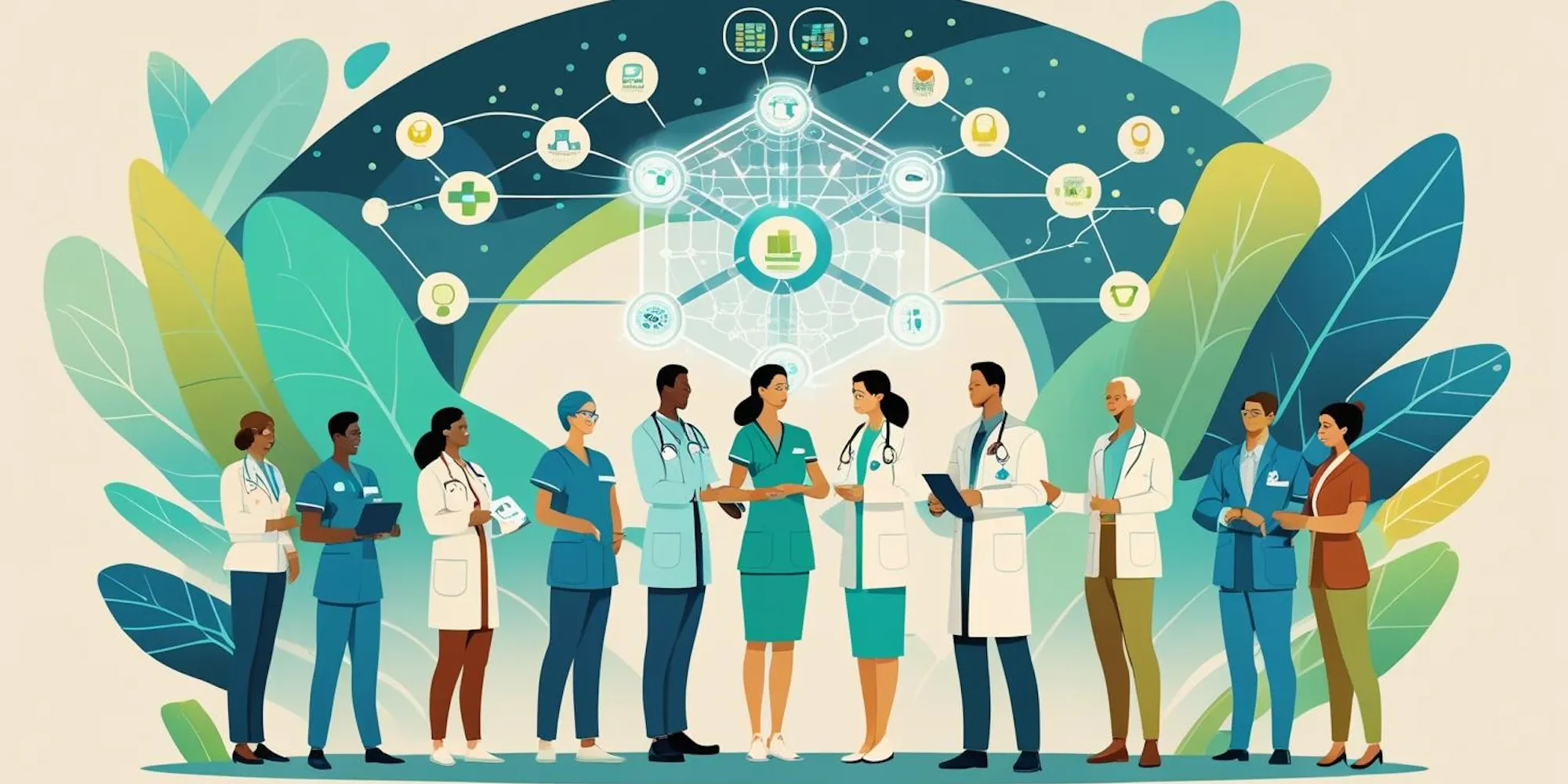Artificial Intelligence
15 min read
AI-Driven Workflow Optimization in Nursing Departments: Transforming Healthcare Operations
The integration of Artificial Intelligence (AI) in nursing operations is revolutionizing the healthcare sector. Recent studies have shown that healthcare facilities implementing AI-driven solutions have achieved a remarkable 30-40% reduction in administrative workload, while experiencing a 25% increase in patient satisfaction scores. This technological evolution addresses critical challenges like nurse burnout and staff shortages, enhancing operational efficiency. The impact of AI on nursing departments is multifaceted, with the potential to transform healthcare operations by analyzing vast amounts of data, informing nurse decision-making, streamlining workflows, and improving patient outcomes.
Current State of AI Implementation in Nursing
The adoption of AI technologies in nursing departments represents a significant advancement in healthcare delivery. According to a 2023 healthcare technology survey, 67% of hospitals are now implementing or planning to implement AI-driven solutions. For instance, Mount Sinai Hospital reported a 35% reduction in administrative tasks after implementing AI systems, allowing nurses to focus on direct patient care. This shift towards AI-driven solutions is improving the efficiency of nursing departments and enhancing the quality of care provided to patients. As the healthcare sector continues to evolve, the adoption of AI technologies is expected to become more widespread, leading to improved patient outcomes and increased job satisfaction among nurses.
Smart Scheduling and Staff Allocation Systems
AI-powered scheduling systems have optimized workforce management in nursing departments by analyzing multiple variables, including: - Patient acuity levels and care requirements - Nurse availability and specializations - Historical staffing patterns - Regulatory compliance requirementsBy analyzing these variables, AI-powered scheduling systems can optimize staff allocation, reduce overtime costs, and improve nurse satisfaction rates. For example, Stanford Medical Center implemented an AI-powered scheduling system, resulting in an 18% reduction in overtime costs, a 35% improvement in nurse satisfaction rates, a 28% decrease in scheduling conflicts, and a 40% reduction in time spent on manual scheduling. The benefits of AI-powered scheduling systems are evident, and their adoption is expected to become more widespread.
Automated Documentation and Clinical Decision Support
Modern AI-assisted documentation systems have transformed traditional nursing workflows by providing real-time documentation benefits, including a 45% reduction in documentation time, a 30% decrease in documentation errors, and 2.5 hours saved per nurse per shift. Additionally, AI-assisted documentation systems can provide 90% accuracy in voice-to-text transcription, reducing the administrative burden on nurses and allowing them to focus on direct patient care. For example, Cleveland Clinic's AI documentation system reduced charting time from 35 minutes to 12 minutes per patient, improved completion rates of required documentation by 40%, and enhanced accuracy of clinical notes by 25%. The impact of AI-assisted documentation systems on nursing workflows is significant, and their adoption is expected to continue growing.
Predictive Analytics for Patient Care
AI-driven predictive analytics have demonstrated significant improvements in patient care outcomes. Early warning systems can detect patient deterioration 6 hours earlier, reducing the risk of code blue events by 45% and unexpected ICU transfers by 33%. Additionally, predictive analytics can improve resource utilization, reducing supply waste by 30% and operational costs by 15%. For example, a study found that AI-driven predictive analytics can reduce length of stay by 20%, improving patient outcomes and reducing healthcare costs. The potential of AI-driven predictive analytics to transform patient care is vast, and their adoption is expected to become more widespread.
Implementation Strategy for Mid-sized Facilities
Implementing AI-driven solutions in mid-sized facilities requires a phased approach, including:1. Initial Assessment (1-2 months): Conduct a workflow analysis, evaluate technology infrastructure, and assess staff readiness.2. Pilot Program (3-4 months): Select a high-impact department, implement core AI solutions, and monitor and measure outcomes.3. Full-Scale Implementation (6-12 months): Gradually expand AI solutions across departments, provide continuous training and support, and regularly evaluate performance.
By following this phased approach, mid-sized facilities can ensure a successful implementation of AI-driven solutions, improving patient outcomes and reducing healthcare costs. The key to successful implementation is to start small, scale up gradually, and continuously evaluate the impact of AI-driven solutions on patient care.
Challenges and Solutions
While AI-driven solutions offer numerous benefits, there are also technical challenges to consider, including:
- Integration with existing systems
- Data security and privacy concerns
- Staff training requirements
To address these challenges, healthcare facilities can implement cloud-based modular solutions, HIPAA-compliant security protocols, and comprehensive training programs. Additionally, 24/7 technical support can ensure that AI-driven solutions are always available and functioning optimally. By addressing these technical challenges, healthcare facilities can ensure a successful implementation of AI-driven solutions, improving patient outcomes and reducing healthcare costs.
Future Outlook
The future of AI in nursing is promising, with emerging technologies like Advanced Natural Language Processing, Real-time patient monitoring systems, and Predictive maintenance for medical equipment expected to transform healthcare operations. Industry projections indicate a 35% CAGR in the healthcare AI market from 2024 to 2028, with 50% of routine tasks expected to be automated by 2025. Additionally, 40% of patient outcomes are expected to improve, and 60% of mid-sized facilities are expected to adopt AI-driven solutions. The potential of AI to transform healthcare operations is significant, and its adoption is expected to continue growing.
Conclusion
AI-driven workflow optimization represents a transformative opportunity for nursing departments to enhance efficiency and improve patient care quality. The demonstrated benefits in time savings, improved patient outcomes, and staff satisfaction make it a crucial investment for modern healthcare facilities. To learn more about implementing AI solutions in your healthcare facility, contact our healthcare technology experts or share your experiences with AI implementation in nursing departments. By working together, we can harness the power of AI to transform healthcare operations and improve patient outcomes, focusing on AI in Nursing, Workflow Automation, Predictive Staffing, Clinical Decision Support, and Nursing Informatics.
Reference Links:
https://pmc.ncbi.nlm.nih.gov/articles/PMC11850350/
https://www.sciencedirect.com/science/article/pii/S2949916X24000884
Get the latest updates
We only send updates that we think are worth reading.



